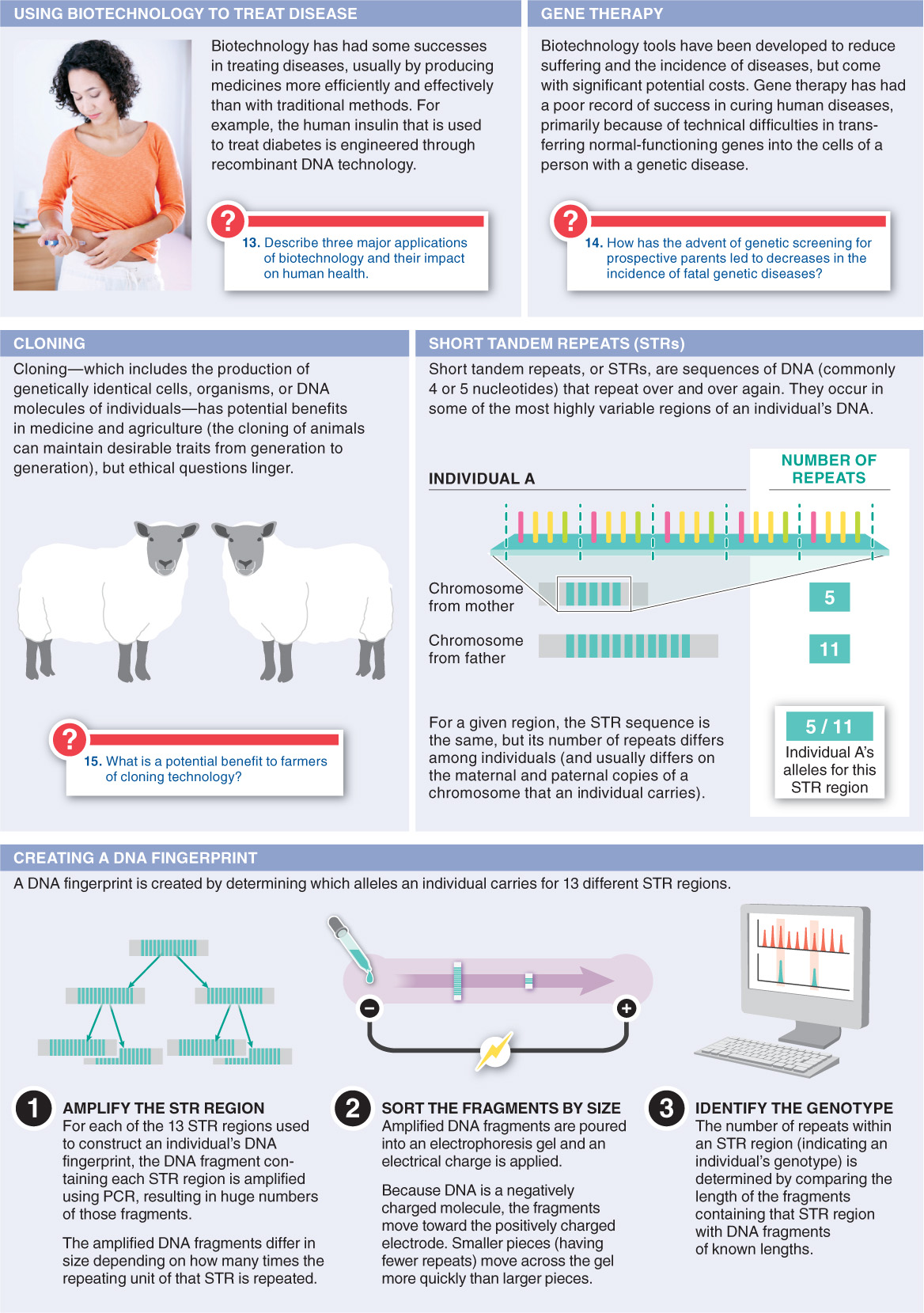5.15–5.18
5.15–Biotechnology has the potential for improving human health (and criminal justice)
Advances in biotechnology have led to some successes in treating diseases, automated methods for analyzing DNA sequences, and the potential benefits of cloning.

Q
Golden rice:
- a) grows without a husk, thereby reducing the processing required before it can be consumed.
- b) can make vitamin A without beta-
carotene. - c) could help prevent blindness due to vitamin A deficiency in 250,000 children each year.
- d) supplies more vitamin A in one serving than an individual needs in a full week.
- e) is one of the most recent developments in organic farming.

Which of the following statements about Bt crystals is correct?
- a) They are produced by soil-
dwelling bacteria of the species Bacillus thuringiensis. - b) The gene coding for the production of Bt crystals has been genetically engineered into the genome of dairy cows, increasing their milk production sixfold.
- c) They are produced by the polymerase chain reaction (PCR).
- d) They are produced by most weedy species of plants.
- e) All of the above are correct.

Recombinant human is/are at the center of the “blood doping” scandals in professional cycling.
- a) erythropoietin (EPO)
- b) growth hormone (HGH)
- c) insulin
- d) red blood cells
- e) stem cells

Short tandem repeat sequences of DNA:
- a) are characteristic of genes that code for biochemical traits rather than structural traits.
- b) are used in biotechnology when creating a clone.
- c) are produced when a mutation occurs in a non-
sex cell. - d) can be used to produce a DNAfingerprint.
- e) are produced when a mutation occurs in a sperm-
producing or egg- producing cell.
